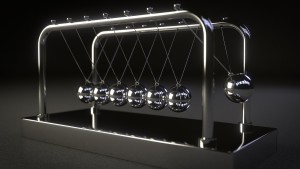I have long asked the spouses/ partners of my chronic pain patients to participate in the DOC project (“Direct your Own Care”—my step-by-step method that allows patients to take control of their treatment plan). One reason is that partners of chronic pain patients also experience suffering—they have their own broken dreams, disappointments, and just plain feeling bad because their partner is feeling bad. It is not primarily psychological. The human brain has “mirror neurons” that are stimulated by others’ behavior. If one partner is having a bad day, there is a good chance that the other’s day is not going to be great, either.
So, when the patient’s partner is snippy, critical, or hostile, the patient tends to feel worse, too. The region of the brain that elicits a bad mood simply is stimulated. Conversely, if one partner is in a great mood, the other tends to be happier.
That is why—indirectly for my patients’ sake and directly for that of their partners—I believe it is vital that both partners learn tools such as expressive writing and adding more play into their lives, that enable them to live a joyful life.

Where is the support?
However, there may be an additional issue beneath the surface because it is remarkably difficult to convince other members of the household to engage in these tools. If you care for your family member, why would you not try to do as much as possible to help him or her heal? I ran across this article that partially explains why. Family members may not believe that a patient really is experiencing that much pain. It may be more common than I believed. Therefore, their compassion may understandably be limited.
Couple’s study
A multi-center published in 2013 (1) measured the following variables in 105 couples over two weeks:
- Patient’s pain
- Spouse’s observations of patient’s pain behaviors such as complaining, grimacing or grabbling.
- The patient’s perceived criticism or hostility from his or her partner
The following observations were made:
- Patient’s pain increased for over three hours when they felt hostility or were criticized.
- Patient’s observed pain behavior consistently created a negative reaction from their partner.
- These interactions were consistent. The assumption was that long-term low level negative interactions will erode relationships and quality of life.
This interaction is similar to what has been found in depression research. Depressed patients act in ways that cause rejection from others, which in turn exacerbates the depression.
There is no question that chronic pain is a family issue. The couples study does not even take into account the damage an angry person in chronic pain can inflict on his close relationships. The family unit can become a living hell and it can seem like a hopeless situation. But, like the patient’s condition, the family dynamic can get better, with the right tools. It did with me.
Feeling Good Together
David Burns, MD is a Stanford psychiatrist and the author of Feeling Good. I attended his five-day seminar a few years ago where advanced Cognitive Behavioral Therapy (CBT) techniques were presented. One afternoon was devoted to relationships. He had been given a large advance to write a similar book applying (CBT) to relationships. He then used these techniques on 50 couples without any success. He returned the advance and went on a five-year quest to find out what was really going on. Subsequently, he wrote a second remarkable book called Feeling Good Together. One stunning insight from this book that hit me hard was that, when your partner acts in a way that upsets you, of course you want to blame him or her; but you are the one who set it up. It was your actions that caused your partner to react in a way that made you angry.

That insight had a major impact on my awareness of my own behavior—not just toward my wife, but in my relationships with everyone. However, I found it to be by far the hardest part of my journey. Whenever I feel upset as a result of something my spouse says or does, it still feels like it is she, not I, who caused the upset. It has taken me years to consider the effect my words and behavior have on others’ feelings. I still have a long way to go. It is unbelievably humbling.
Protect your family from your pain
The Marriage-go-round
How do you break the cycle of pain behavior, criticism from your partner, and more pain? Let’s face it: You have the choice whether to engage in pain behavior or not. At some level you must know that your partner is going to react negatively to it, but you do it anyway. When you feel the hostility and criticism from your partner, your pain increases. This is expected, since we know that stress chemicals increase the speed of nerve conduction, resulting in more pain. (2) Since there is seemingly no end to the pain, the cycle can continue for a long time. You’re already mad at your partner; why not continue to be irritating?

If endless conflict is damaging your whole family, consider it an opportunity to work through the solution together and come out stronger than ever before. The solution for chronic pain is not difficult once you understand the nature of the problem. It turns out—and I say this from experience—that anxiety and anger are the pain. Use the DOC tools to help you, your partner, and other family members to live a life you all cherish.
Listen to the Back in Control Radio podcast The Chronic Pain Marriage Go Round
- Burns, JW, et al. Temporal associations between spouse criticism/ hostility and pain among patients with chronic pain: A within-couple daily diary study. Pain (2103); 154: 2715-2721.
- Chen X, et al. “Stress enhances muscle nociceptor activity in the rat.” Neuroscience (2011); 185: 166-173
